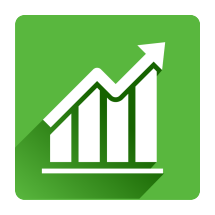
Marketing content shared with Michigan Business Network by:
Bonnie J. Knutson, PhD
The School of Hospitality Business
Broad College of Business
Michigan State University

Think back to one of your World History classes; you may remember reading about Julius Caesar crossing the river Rubicon in 49 BC. According to some historians, as he crossed, he famously said, alea iacta est, which loosely translated means “the die is cast.” Over time, Caesar’s utterance has come to mean that we are passing a point of no return.
Fast forward to November 15, 2022, when the world crossed another Rubicon. It was on that date that United Nations demographers announced the birth of the world’s 8th billion baby. While no one knows the who, where, or specifically when this Rubicon was passed, population scientists believe that the world’s newest citizen was born in the southern hemisphere, most likely in India. This ties in with two significant projections: [1] India will soon overtake China as the most populous country in the world, and [2] Economic growth/impact is moving from north of the equator to the southern hemisphere. Think of the impact on brand expansion, cultural differences, training, and immigration policies.
But there are other Rubicon crossings that will affect how we live, work, play, and operate our businesses. Take energy for example, which can simply be defined as the capacity to do work. A half of a century ago, futurist Alvin Toffler developed a theory he called the Third Wave. He speculated that the waves are based on how we do work – i.e. energy. The first wave was driven by human and animal power; it was named the agrarian wave. This was overtaken by the industrial age, based in large part, on energy produced by hydrocarbons. This second wave enabled the industrial era and was based on everything mass – production, markets, education, media, ad infinitum. This often led to centralized management, standardization, sameness, and “a style of organization we call bureaucracy.”
If you adhere to the trilogy that Alvin Toffler put forth, The Department of Energy (DOE) began taking us across another Rubicon when it announced, in 2022, the scientific breakthrough in nuclear fusion, “a major step toward developing a new sustainable form of energy that releases virtually no carbon dioxide or other types of air pollution.” This discovery
is projected to be a major step in the ability to generate large amounts of energy without burning fossil fuels. While large-scale applications are still years away, the DOE has at least put our toes into that river.
Another Rubicon is somewhat related to that 8th million baby. For the first time in history, there are six generations of consumers and five generations of employees -- the Greatest, the lesser Silent, the large Baby Boomers, followed by a smaller Generation X, the infamous Millennials, Generation Z, and Generation Alpha, the newest to be named. This last is the cohort born after 2011 and just beginning to enter the middle grades. And if you have recently been in Orlando’s land of the Mouse, you know they already have impact on what families do and buy.
But it is Generation Z that is currently commanding a lot of our attention. While demographers may disagree as to when Gen Z began, most agree that 1996-1997 was the starting point. Numbering about 68.8 million people, they currently represent about 21 percent of the U.S. population. Sometimes nicknamed the Zoomers, the vanguard of this generation is now about 25 or 26 years old. They are leaving college, entering the workforce, and beginning to move up the proverbial corporate ladder. They are also ordering and buying. They are likewise our employees.
The connection among these three Rubicon crossings is technology. I read somewhere that the whole nature of society – i.e. the relationship between people and organizations – is significantly altered by the impact of new technology. Ice box to refrigerator. Horse-drawn wagon to electric vehicle. Pony-express to email. Adverts to Q-Codes. And we can’t forget online shopping, curbside pick-up, and door-to-door delivery.
To some degree, people’s lives are modified to serve the technology, changing the way people communicate and interact. For Baby Boomers it was television; for Generation X it was the computer, and for Millennials it was the Internet. But it is Generation Z that is leading the charge across this third river of transformation as it is the first truly digital generation. By the time they were in their formative years, Wi-Fi and high-band cellular service enabled them to connect to the web on mobile devices anytime and anywhere. Social media, 24-7 communications, and on-demand entertainment were assumed; these are an integral part of the Gen X lifestyle.
While technologies – from data-driven analytics to robots in warehouses – continue to grow, businesses will still have to put the emphasis on people, not on technology. This year,
2023, has been called the year of the customer, but every year is really the year of the customer or the employee.
If the pandemic world taught us anything, it taught us that our organization cannot develop a marketing plan aimed at convincing people to buy from or work in our business. The emphasis – indeed, the priority – has shifted towards providing amazing experiences that build loyalty, that elusive word-of-finger (no longer just word-of-mouth), and revenues. It will be Generation Z – the next generation of business leaders – that will lead the charge across the technology Rubicon. Are you crossing with them?
Your Bottomline will thank you.












